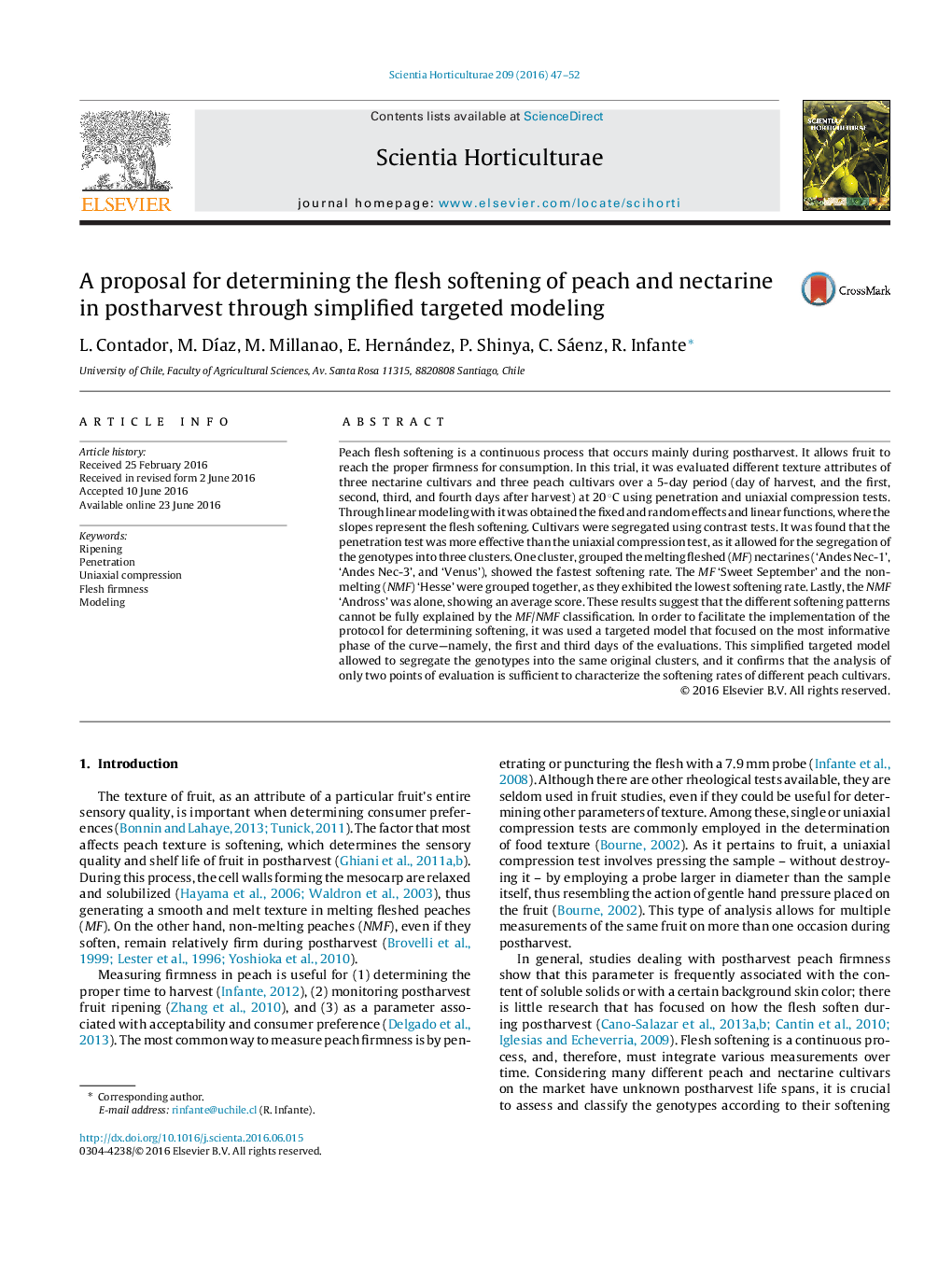| Article ID | Journal | Published Year | Pages | File Type |
|---|---|---|---|---|
| 4565949 | Scientia Horticulturae | 2016 | 6 Pages |
•Firmness determination does not allow knowing softening of peach in postharvest.•The softening rate of peach follows a logistic model.•Measuring firmness one and three days after harvest allows to model softening.
Peach flesh softening is a continuous process that occurs mainly during postharvest. It allows fruit to reach the proper firmness for consumption. In this trial, it was evaluated different texture attributes of three nectarine cultivars and three peach cultivars over a 5-day period (day of harvest, and the first, second, third, and fourth days after harvest) at 20 °C using penetration and uniaxial compression tests. Through linear modeling with it was obtained the fixed and random effects and linear functions, where the slopes represent the flesh softening. Cultivars were segregated using contrast tests. It was found that the penetration test was more effective than the uniaxial compression test, as it allowed for the segregation of the genotypes into three clusters. One cluster, grouped the melting fleshed (MF) nectarines (‘Andes Nec-1’, ‘Andes Nec-3’, and ‘Venus’), showed the fastest softening rate. The MF ‘Sweet September’ and the non-melting (NMF) ‘Hesse' were grouped together, as they exhibited the lowest softening rate. Lastly, the NMF ‘Andross’ was alone, showing an average score. These results suggest that the different softening patterns cannot be fully explained by the MF/NMF classification. In order to facilitate the implementation of the protocol for determining softening, it was used a targeted model that focused on the most informative phase of the curve—namely, the first and third days of the evaluations. This simplified targeted model allowed to segregate the genotypes into the same original clusters, and it confirms that the analysis of only two points of evaluation is sufficient to characterize the softening rates of different peach cultivars.
